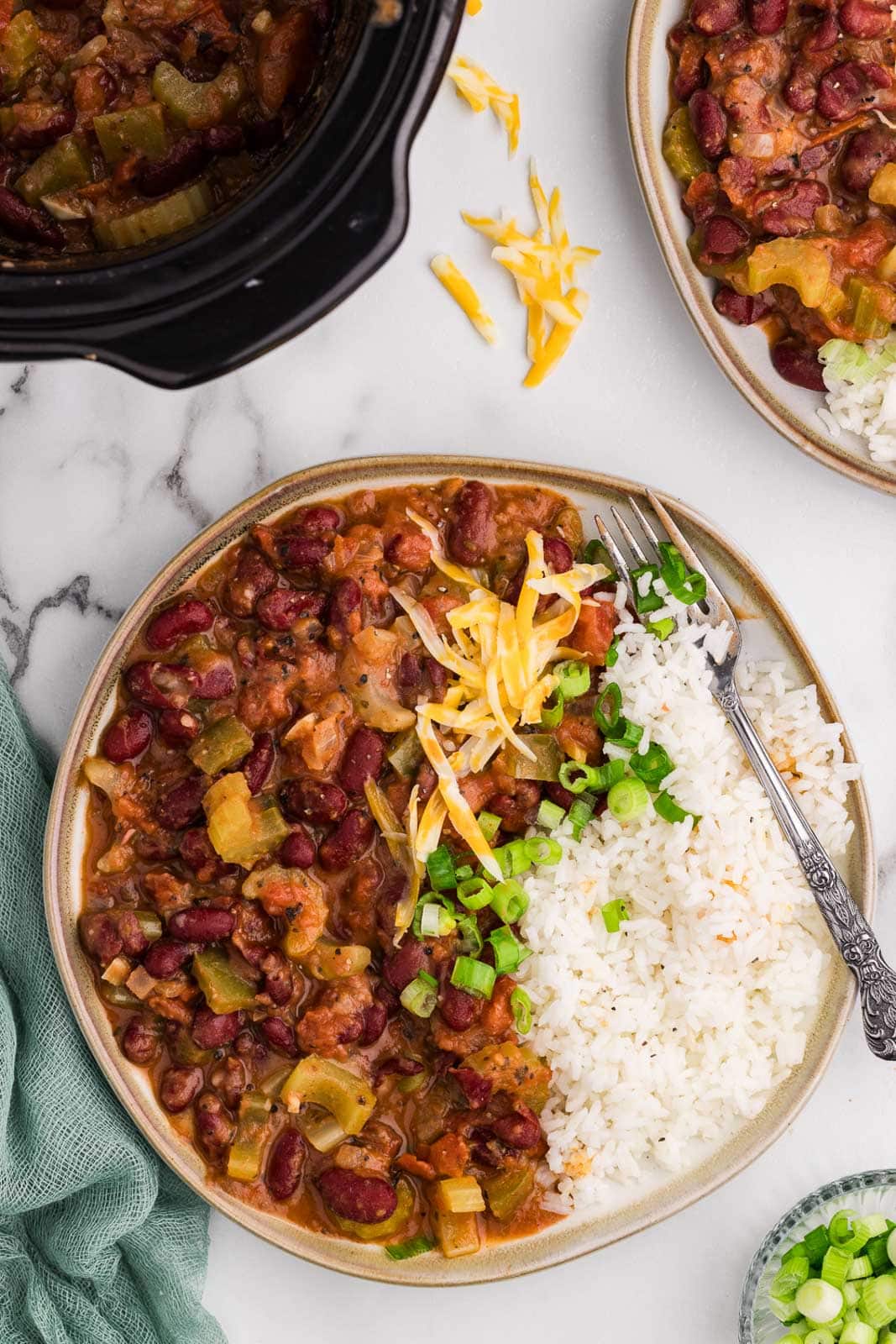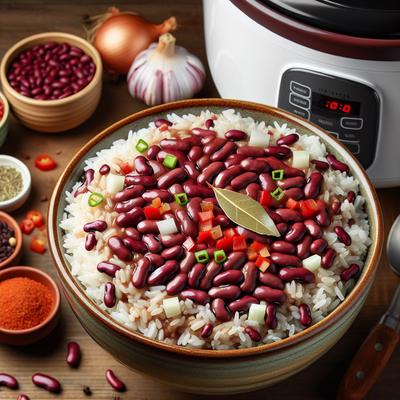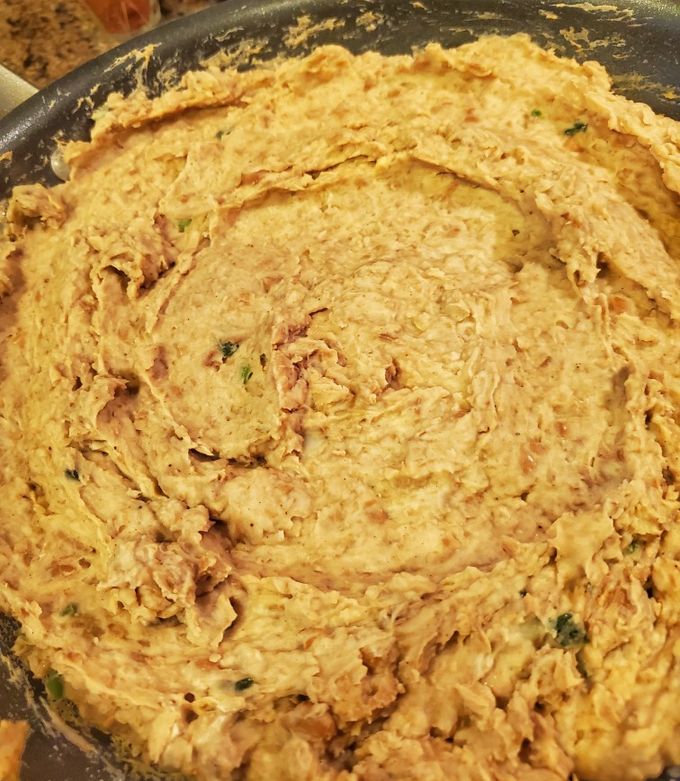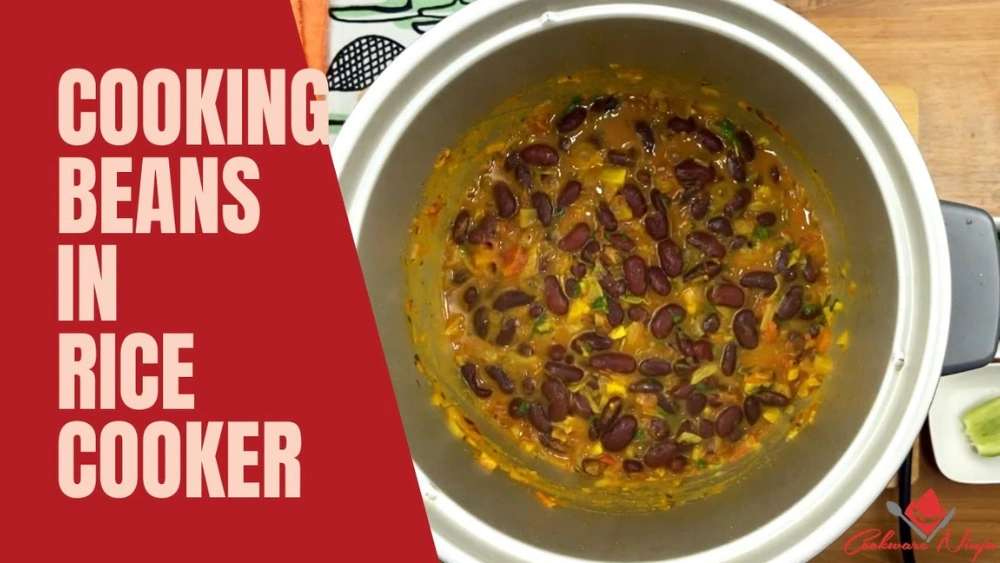Do you want to enjoy perfectly cooked beans without spending hours in the kitchen? Cooking beans can be tricky, but what if you could use your rice cooker to make it simple and hassle-free?
You’ll discover easy steps to cook beans right in your rice cooker, saving you time and effort. Whether you’re a beginner or just looking for a smarter way to prepare beans, this guide will help you get soft, delicious results every time.
Keep reading to unlock the secret to effortless, tasty beans with just a rice cooker and a few simple tips!
Choosing The Right Beans
Choosing the right beans is key to cooking them well in a rice cooker. Beans vary in texture, cooking time, and taste. Picking the right type can make your dish more enjoyable. It also helps you use your rice cooker efficiently. Understanding the differences can save time and improve flavor.
Dried Vs Canned Beans
Dried beans need soaking before cooking. Soaking softens them and reduces cooking time. They offer more control over texture and flavor. Dried beans are usually cheaper and have no added salt or preservatives.
Canned beans are pre-cooked and ready to eat. They save time and effort. Canned beans may contain salt or additives. Rinsing them before cooking can reduce extra sodium. Use canned beans for quick meals or when you don’t want to soak beans overnight.
Popular Bean Varieties
- Black Beans:Soft texture and mild flavor, great for Latin dishes.
- Kidney Beans:Firm and hearty, perfect for chili and stews.
- Pinto Beans:Creamy texture, often used in Mexican cuisine.
- Chickpeas:Nutty taste, ideal for salads and hummus.
- Lentils:Cook quickly and don’t need soaking, good for soups.

Credit: slowcookergourmet.net
Preparing Beans For Cooking
Rinse beans under cold water to remove dirt and dust. Soaking them overnight softens beans and reduces cooking time. Drain soaked beans before placing them in the rice cooker with fresh water.
Cooking beans in a rice cooker might seem unconventional, but it’s an efficient and easy method that yields delicious results. Before you toss your beans into the cooker, it’s crucial to prepare them correctly to ensure they cook evenly and maintain their delightful texture. Proper preparation involves soaking methods and careful rinsing and sorting. These steps not only enhance the taste but also reduce cooking time and improve digestibility. Ready to get started?Soaking Methods
Soaking beans is a simple yet powerful step that can transform your cooking experience. By soaking, you allow the beans to absorb water, which softens them and shortens cooking time. Consider the traditional overnight soak, where you cover the beans with water and let them sit for 8 hours or more. This is perfect if you plan ahead. Alternatively, a quick soak can save the day if you’re short on time. Bring your beans to a boil, let them sit for an hour, and voilà, they’re ready for the next step. Which method do you prefer? Try experimenting with both to see which suits your schedule and taste.Rinsing And Sorting
Once you’ve soaked your beans, it’s time to give them a thorough rinse. This step removes any remaining debris and helps eliminate some of the sugars responsible for gas production. Sorting is equally important. Take a moment to sift through your beans and remove any discolored or damaged ones. Think of this as a quality check. You want only the best beans making it to your rice cooker. Isn’t it satisfying knowing you’re taking the extra steps to ensure a delicious meal? A little attention to detail can go a long way in cooking.Setting Up Your Rice Cooker
Setting up your rice cooker properly is key to cooking beans evenly and efficiently. It’s not just about dumping beans and water into the pot; you need to prepare your cooker with intention. The right setup can save you time and prevent undercooked or mushy beans.
Choosing The Right Rice Cooker
Not all rice cookers handle beans the same way. If your cooker has a “slow cook” or “porridge” setting, it’s more likely to cook beans thoroughly without burning. Basic models might need your attention to avoid overflows or uneven cooking.
Look for features like:
- A larger pot size to accommodate beans expanding during cooking
- A non-stick interior for easier cleanup
- Multiple heat settings for better control
Have you checked if your rice cooker manual mentions anything about cooking beans? Sometimes, the manufacturer includes tips that make the process smoother.
Using The Correct Settings
Choosing the right setting on your rice cooker can make a big difference. If you use the standard “white rice” mode, beans might not cook long enough. Instead, try the “porridge,” “slow cook,” or “steam” options if available.
Here’s a quick guide to settings:
| Setting | Why Use It | Tip |
|---|---|---|
| Porridge | Gentle simmer perfect for beans | Check water level halfway through cooking |
| Slow Cook | Longer cooking time for soft beans | Add extra water to prevent drying |
| Steam | Good for quick cooking pre-soaked beans | Monitor closely to avoid undercooking |
Experiment with these settings to find what works best for your bean type and rice cooker model. Don’t hesitate to pause and stir if your cooker allows it, keeping beans from sticking to the bottom.
Cooking Beans Step-by-step
Cooking beans in a rice cooker simplifies the process and saves time. This method delivers soft, flavorful beans without constant attention. Follow these steps to get perfect beans every time.
Measuring Beans And Water
Start by measuring the beans accurately. Use about one cup of dried beans for every two to three cups of water. The water amount depends on the bean type and desired softness. Rinse the beans well before cooking to remove dirt and dust.
Adding Seasonings
Add seasonings to enhance flavor. Common options include salt, garlic, onion, and bay leaves. Add these directly into the rice cooker with the beans and water. Avoid salty seasonings before cooking finishes to prevent tough beans.
Cooking Time Tips
Cooking time varies by bean type. Small beans like black or navy beans take about 45 minutes to an hour. Larger beans like kidney or pinto may need up to 90 minutes. Use the rice cooker’s “cook” setting and check beans periodically. If they are not soft, add water and cook longer.
Checking For Doneness
Knowing when your beans are perfectly cooked in a rice cooker can be tricky. Unlike stovetop cooking, you can’t always rely on visual cues alone. Checking for doneness ensures your beans aren’t undercooked or mushy, giving you the ideal texture for your dish.
Texture Indicators
Start by tasting a few beans from different parts of the rice cooker. Properly cooked beans should be tender but still hold their shape. If they feel hard or gritty, they need more time.
Look for beans that mash easily with a gentle press but don’t turn into paste. Overcooked beans often split or become too soft, losing their structure. Your goal is a balance between softness and firmness.
Does the texture match what you want for your recipe? For salads, firmer beans work best, while soups call for softer ones.
Adjusting Cooking Time
If your beans aren’t done yet, add more cooking time in short increments—5 to 10 minutes is usually enough. Check the texture after each interval to avoid overcooking.
Remember, different types of beans and their age can affect cooking time. Older beans often take longer, so keep that in mind when setting your rice cooker.
Using the “keep warm” setting can help soften beans further without burning them. However, don’t rely on this too much; it’s better to extend cooking time gradually.
What’s your preferred bean texture, and how do you adjust cooking times to get it right every time?
Enhancing Flavor
Cooking beans in a rice cooker is simple. But boosting their flavor makes the dish special. Enhancing flavor turns plain beans into a tasty meal. Small additions can create big changes.
Use spices, herbs, and fresh aromatics to enrich the taste. These ingredients bring depth and aroma. They make the beans more enjoyable and inviting.
Spices And Herbs
Spices add warmth and complexity. Common choices include:
- Cumin – earthy and slightly smoky
- Paprika – mild and sweet or spicy
- Bay leaves – subtle, herbal notes
- Chili powder – adds heat and color
Herbs bring freshness. Try:
- Thyme – light and minty
- Oregano – sharp and aromatic
- Cilantro – bright and citrusy
- Parsley – clean and mild
Add dried herbs at the start. Fresh herbs work best at the end. They keep their flavor and color.
Adding Aromatics
Aromatics create a rich base. Use ingredients like:
- Onion – sweet and savory
- Garlic – pungent and spicy
- Ginger – warm and zesty
- Celery – crisp and slightly bitter
- Carrots – sweet and earthy
Chop them small for even cooking. Sautéing aromatics before adding beans deepens flavor. If your rice cooker has a sauté function, use it. If not, add raw aromatics directly. The beans will absorb their essence as they cook.
Common Troubleshooting
Cooking beans in a rice cooker is easy but can sometimes bring small problems. Knowing how to fix these issues helps you get perfect beans every time. Troubles with texture or cooker function are common. Here are simple tips to solve these problems quickly.
Beans Too Hard Or Soft
Beans may stay hard if not soaked long enough. Soaking beans overnight softens them and reduces cooking time. Use enough water to cover the beans well.
Cooking beans too long makes them mushy. Watch the cooking time closely. Check beans after 30 minutes and test their softness.
Adjust water amount based on bean type. Some beans need more water to cook fully. Use fresh water for cooking, not soaking water.
Rice Cooker Issues
Rice cookers vary in power and settings. Some cook beans faster, some slower. Use the “cook” mode and monitor progress often.
If the cooker switches to “warm” too soon, it may need manual restarting. Press “cook” again until beans are done.
Clean the cooker pot well before use. Residue can affect heat and cooking time. Avoid overfilling the pot to prevent spills.
Check the rice cooker manual for specific tips. Some models have bean or slow-cook functions that work better.

Credit: www.snapcalorie.com
Storing And Using Cooked Beans
Cooked beans are a versatile ingredient that can be stored and used in many ways. Proper storage keeps them fresh and safe to eat. Using cooked beans in different recipes adds nutrition and flavor to meals.
Refrigeration Tips
Store cooked beans in an airtight container to keep moisture out. Let the beans cool completely before refrigerating. Keep them in the fridge for up to 5 days. Avoid storing beans in their cooking liquid for longer freshness. Label the container with the date to track storage time. For longer storage, freeze beans in portion sizes using freezer bags or containers. Frozen beans last up to 3 months and thaw quickly.
Creative Recipes
Cooked beans work well in many dishes. Mash them for a creamy bean dip or spread. Add beans to salads for extra protein and texture. Stir beans into soups and stews for a hearty meal. Use beans as a filling for tacos or burritos. Mix beans with rice and vegetables for a simple, healthy bowl. Beans also make a great base for veggie burgers. Experiment with spices and herbs to change the flavor.

Credit: cookpad.com
Frequently Asked Questions
How Long Does It Take To Cook Beans In A Rice Cooker?
Cooking beans in a rice cooker usually takes 45 to 60 minutes. Soaking beans beforehand can reduce cooking time and improve texture.
Can I Cook Dried Beans Without Soaking First?
Yes, you can cook dried beans without soaking. However, soaking softens beans and shortens cooking time, improving digestibility.
What Types Of Beans Work Best In A Rice Cooker?
Most beans like black, kidney, pinto, and chickpeas cook well in a rice cooker. Avoid very small or split beans.
How Much Water Should I Add When Cooking Beans?
Add about 3 cups of water for every cup of dried beans. More water prevents drying out and ensures even cooking.
Conclusion
Cooking beans in a rice cooker saves time and effort. It cooks beans evenly without much fuss. Just add beans, water, and let the cooker do its job. You get soft, tasty beans ready for any meal. This method works well for many bean types.
No need to watch or stir often. Perfect for busy days or simple cooking. Give this easy way a try for your next dish. Beans made easy. Beans made tasty.

